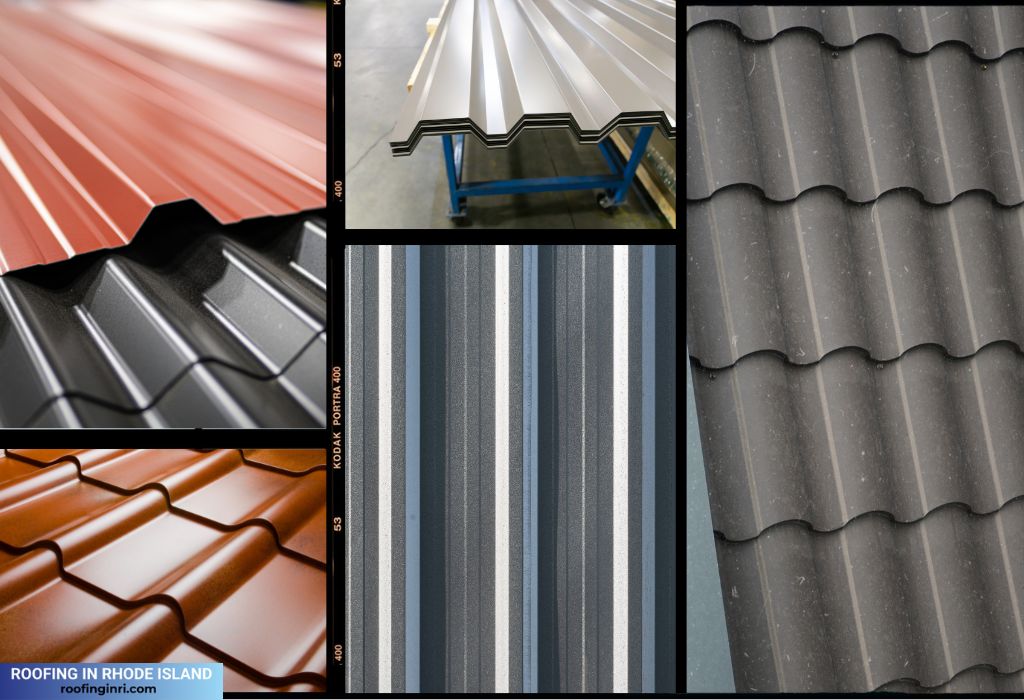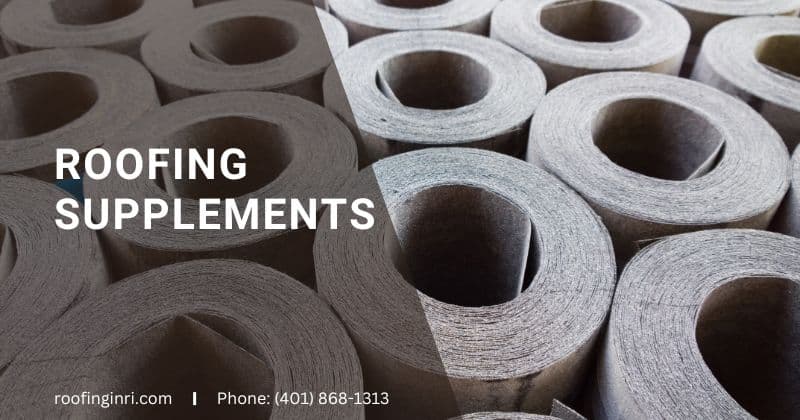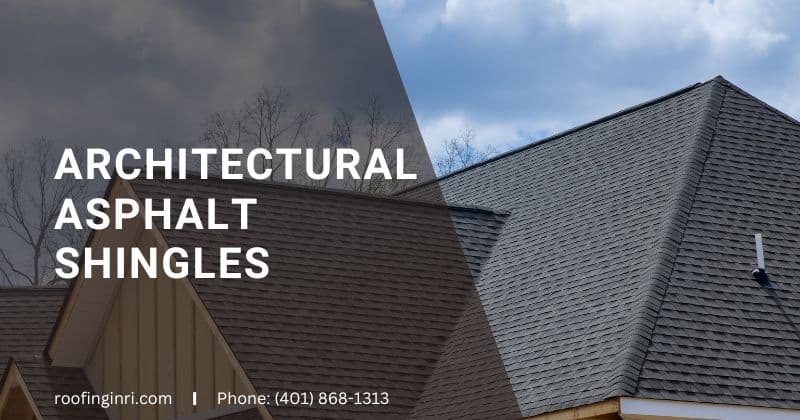Choosing the right type of metal roof for your home can enhance its durability, energy efficiency, and curb appeal. This guide covers the most common types of metal roofs, what makes them a great choice, and factors to consider when choosing the perfect fit for your home.
Why should you choose a metal roof?
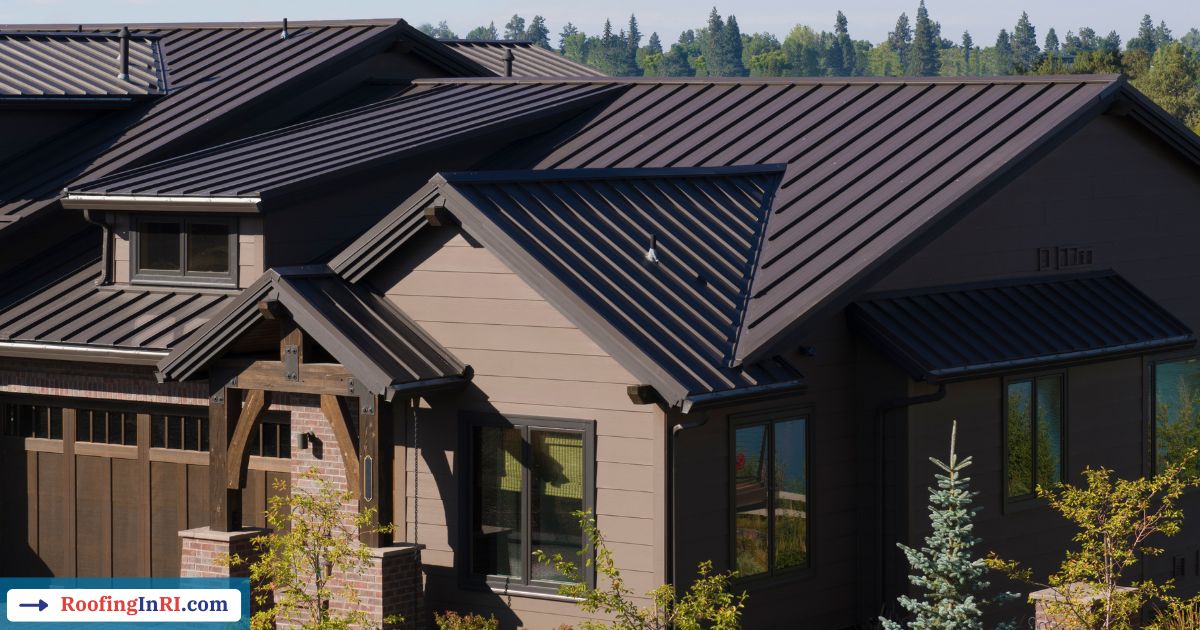
Choosing a metal roof for your home ensures long-lasting durability, energy efficiency, and low maintenance. It provides excellent protection against extreme weather, enhances curb appeal with versatile designs, and often increases your property’s resale value.
Metal roofs offer several benefits that make them an excellent investment:
- Durability: With a 40 to 70-year lifespan, metal roofs outlast traditional roofing materials like asphalt shingles.
- Weather Resistance: Metal roofing can withstand heavy snow, high winds, and hail, making it ideal for regions with extreme weather.
- Energy Efficiency: Reflective coatings on metal roofs help reduce cooling costs by deflecting heat from the sun.
- Eco-Friendly: Many metal roofs are made from recyclable materials, reducing waste.
- Aesthetic Versatility: Available in various styles, colors, and finishes to suit any architectural design.
All right, let’s look at the available options.
Exploring the different types of metal roofs
When considering a metal roof, it’s essential to understand the different types available to find the best fit for your home’s style, needs, and budget. Each type offers unique benefits, materials, and aesthetics tailored to various preferences and climates.
Standing seam metal roofs
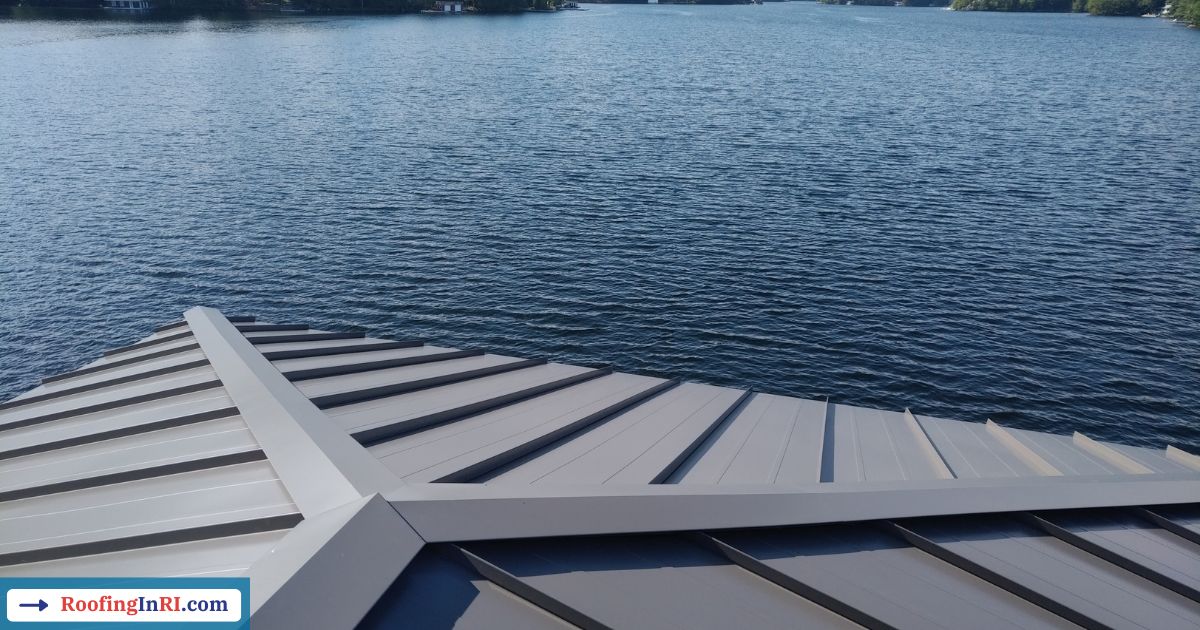
A standing seam metal roof features vertical panels with raised seams that interlock to create a sleek, weather-tight finish. It’s made up of long metal panels that have raised edges (seams) that snap together. These seams keep water out, making it super durable and low-maintenance. Plus, it looks clean and modern! It’s known for durability, minimal maintenance, and a contemporary appearance.
Standing seam metal roofs are best for homeowners who want a sleek, modern look, long-lasting durability, and low maintenance. They’re ideal for areas with extreme weather, like heavy snow or rain, and those willing to invest upfront for energy efficiency and fewer repairs over time.
Benefits
- Excellent water resistance due to raised seams.
- Sleek, minimalist design.
- Minimal maintenance is required.
Drawbacks: Some drawbacks are its higher upfront cost, installation compatibility, and the fact that it can sound loud in rain or hail if not appropriately insulated.
Explore the metal roofing myths.
Corrugated metal roofs

It’s a type of roofing made from sheets of metal shaped into ridges and grooves, creating a wavy pattern. This design adds strength and durability to the material, making it lightweight yet sturdy.
Corrugated roofs are commonly used for barns, sheds, and industrial buildings, but modern designs have also made them popular for residential homes. They are cost-effective, easy to install, and resistant to rust (when coated), but they may not provide as sleek a look as standing seam roofs.
Unlike standing seam roofs, corrugated metal roofs typically use exposed fasteners, such as screws or nails, to secure the panels to the roof structure. These fasteners are visible on the surface of the roof. This is generally more affordable than other metal types.
Three main types of Corrugated Metal are Traditional, Box Rib, and V-Rib. These metals best suit barns, sheds, and homes with a rural aesthetic.
Benefits
- Affordable and widely available.
- Easy installation due to its lightweight nature.
Drawbacks: They can rust or leak over time if not coated or maintained.
Explore the benefits of metal roofing.
Metal Shingles
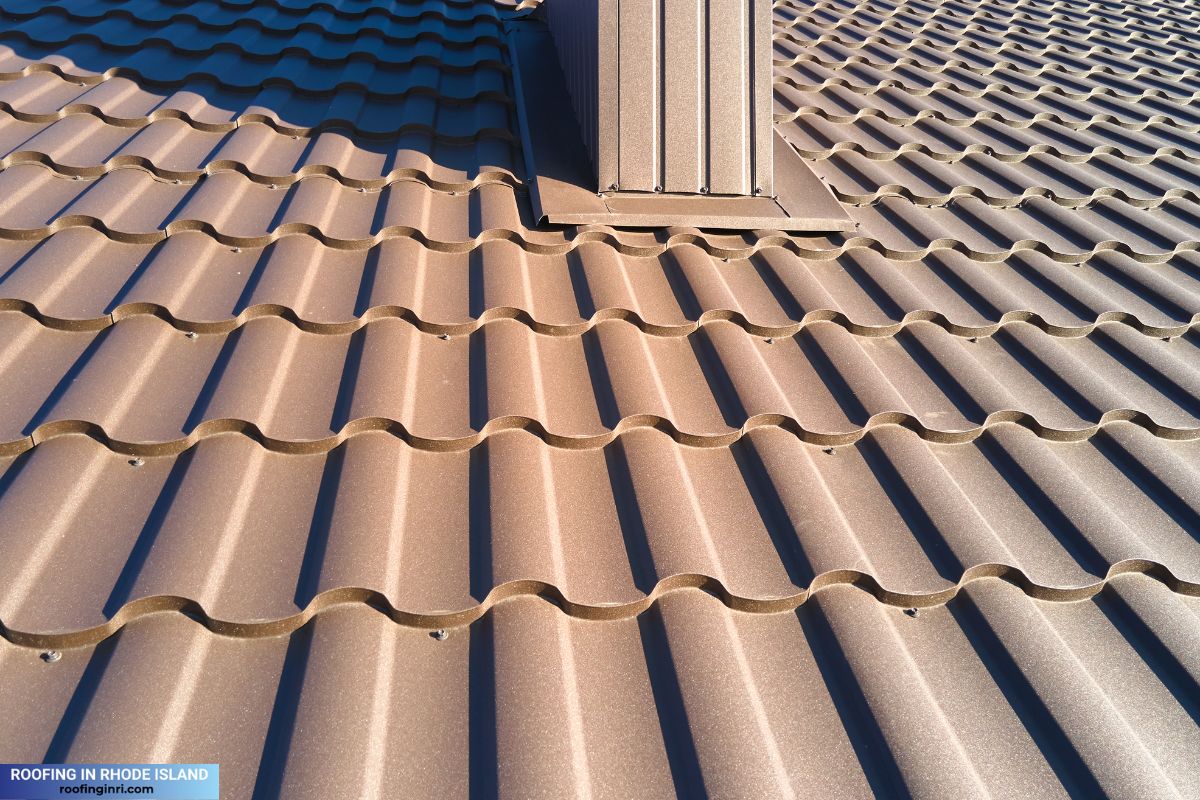
These are made of metal, designed to mimic the appearance of traditional shingles, such as asphalt, wood, or slate. They come in various styles and finishes, offering durability and resistance to weather while maintaining a classic look. Metal shingles combine strength with traditional roofing materials’ aesthetic versatility (to mimic asphalt or slate).
It best suits homeowners seeking the durability of metal with a classic look.
Benefits
- Durable and energy-efficient.
- Stylish and available in various colors and textures.
Drawbacks: It costs more compared to asphalt shingles.
Read also: The reasons why you should not install metal roofs over shingles.
Stone-coated steel roofs
These are made from steel sheets coated with a layer of stone chips bonded with an acrylic adhesive. This design combines the durability of steel with the appearance of traditional roofing materials like tile, shake, or shingles.
The stone coating enhances aesthetics, reduces noise, and adds extra protection against weather elements, making it a stylish, long-lasting roofing option.
These are best in areas with severe weather.
Benefits
- Impact-resistant and fireproof.
- It combines the durability of steel and the beauty of stone.
Drawbacks: It’s heavier and more expensive than standard steel panels.
Read your options when you need a new roof but can’t afford it.
Aluminum roofs
Aluminum roofs are lightweight, corrosion-resistant roofing systems made from aluminum panels or shingles. They are known for their durability, energy efficiency, and ability to withstand harsh climates, including saltwater exposure, making them ideal for coastal areas.
Aluminum roofs are also recyclable and low-maintenance, offering an eco-friendly, long-lasting roofing solution. They are best suited for homes near saltwater environments.
Benefits
- Rust-proof and lightweight.
- Reflects sunlight, reducing energy costs.
Drawbacks: Softer material, making it prone to dents.
Read also: Will roofing companies offer financing for a new roof?
Copper roofs
Copper roofs are premium roofing systems made from copper. They are valued for their durability, elegance, and ability to develop a distinctive green patina over time due to oxidation. Known for their longevity—often lasting over 100 years—they are resistant to rust, corrosion, and extreme weather.
Copper roofs are lightweight, eco-friendly, and require minimal maintenance. They are also the most expensive roofing option and a luxurious choice for homeowners seeking a timeless aesthetic.
Benefits
- Incredibly durable and long-lasting.
- Unique aesthetic appeal.
Drawbacks: This option is costly and less common.
Zinc roofs
Environmentally friendly material that forms a self-healing patina.
Zinc roofs are roofing systems made from zinc, a durable and eco-friendly metal known for its self-healing properties. Over time, zinc develops a protective patina that repairs scratches and resists corrosion, extending its lifespan to 80–100 years or more.
These are lightweight, malleable (can be hammered without breaking) for unique designs, and environmentally sustainable as they are recyclable.
However, they can be expensive upfront and require skilled installation to avoid improper drainage, which may lead to staining. Their distinctive appearance makes them a popular choice for modern and architectural homes.
Benefits
- Resistant to corrosion and scratches.
- Highly recyclable.
Drawbacks: It’s expensive and not widely available.
Read also: General mistakes of metal roof installation.
Factors to consider when choosing a metal roof
Selecting the right metal roof involves more than just style; factors like durability, cost, energy efficiency, and climate compatibility play a crucial role. Understanding these considerations ensures you choose a roof that meets your home’s needs and stands the test of time.
1. Climate
- Aluminum and zinc roofs resist rust and corrosion in humid or coastal regions.
- Stone-coated steel or standing seam roofs are ideal for snowy areas.
2. Budget
- Corrugated metal roofs are affordable, while copper and zinc roofs are premium options.
3. Longevity
- Copper roofs can last over 100 years, making them a one-time investment for long-term homeowners.
4. Aesthetic appeal
- Metal shingles and stone-coated steel mimic the look of traditional roofing materials.
- Standing seam panels offer a sleek and modern design.
Choosing the best type of metal roof depends on your home’s location, design, and budget. Whether you prefer the sleek appearance of standing seam panels, the rustic charm of corrugated metal, or the luxurious durability of copper, metal roofing is a wise investment.
While asphalt shingles are cheaper upfront, metal roofs offer better durability, energy efficiency, and long-term value. Metal roofing can last up to three times longer than shingles, reducing the need for frequent replacements.
The biggest problem with metal roofs is their higher upfront cost than traditional roofing materials like asphalt shingles. While metal roofs offer durability and long-term savings, the initial investment can be a barrier for some homeowners.
Expansion and contraction with temperature fluctuations are other common issues with metal roofs. As temperatures change, the metal panels expand and contract, which can cause fasteners to loosen over time or lead to noise if the panels aren’t properly installed with allowances for movement. This is why proper installation and high-quality materials are critical.
Copper roofs are the longest-lasting type of metal roofing, lasting 70 to over 100 years when properly maintained. Their natural patina not only adds aesthetic appeal but also provides protection against corrosion, making them incredibly durable in various climates.

